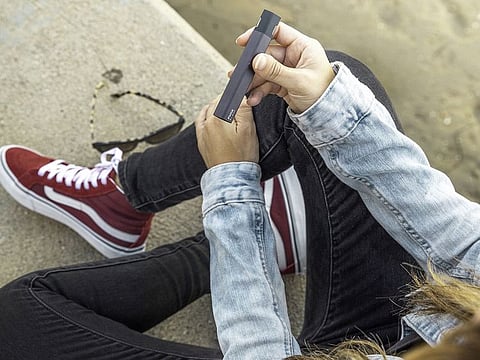How vaping among teens emerged as a global health emergency
In the West, vaping is increasingly targeting children as consumers

Vapes are the not so new toys but they are ubiquitous, from school toilets to the malls, impressionable children are experimenting with it as casually as wearing a pair of shoes. Pre-teens on the smoking bandwagon, what were we thinking? Add the teenagers and it is an epidemic.
The UK is now cracking down on the sale of disposable e-cigarettes to curb down its usage among children. It will ban the sale of one-time use vapes which though illegal under the age of 18, has been freely consumed, not unlike global trends.
In the West 9% of 11—15-year-olds are now vaping, and the numbers have reportedly tripled in the past three years. This however is just the tip of the iceberg. As per NHS digital, one in five, 15-year-old smokes an e-cigarette. These are figures from 2021 and those numbers by most accounts have increased exponentially. Nor is it just UK’s problem.
Scarily, vapes are trending not just in senior school in the West but also in middle school and by comparison the recent anomaly of little girls buying adult make-up feels like a walk in the park.
Social media and peer pressure have put a generation out to graze on some easy kick and tastes. The UK government says by next year these pop-up flavours that are ‘specially marketed at children’ will be restricted and manufacturers will be ordered to use plainer packaging as in cigarette covers. Health experts will vouch, it is not the intent but the implementation that could help safe the children.
Trap of unregulated use
There has also been a lot of mixed messaging when it comes to stamping down on the use of vapes. The issue of adults using it as a replacement for the tobacco in cigarettes needs to be separated from children as young as in class 6, vaping. There is no lesser of the two evils, at that age it is pure evil.
Doctors will agree that there can be no comparison with lungs of children which are still developing, and any mutation like Zombie vapes compromises their health further.
The nicotine-tinged e-cigarette that discreetly resembles a USB flash drive, a pen or a small box among its varied avatars does not omit ash or a smell, and heats into vapour without tar or tobacco. Promoted as the healthier option to cut out the carcinogenic substances, a single pod some doctors say can be as bad as smoking a packet of cigarettes in a day.
So, while it is subjectively less dangerous than a cigarette, being unobtrusive it is easy to fall in the trap of unregulated use. Disposable vapes in the UK at least have the highest legally allowed nicotine concentrations. What kids are getting from outside, is anyone’s guess.
Time is running out
In 2023, 34 countries banned vapes as per the World Health Organisation which has red flagged its use among children as a health emergency and urged governments to treat it on par with tobacco use. France’s National Assembly has also unanimously approved a bill to ban single-use, disposable electronic cigarettes. But the struggle to enforce the ban is real, including clamping down on its sale in proximity to schools.
In 2017, Boston Globe called vaping the most widespread phenomenon you have not heard of. And those who see it close are not making the noise they should. Statistics in US are equally worrying, four years back it was estimated that 5 million children in the country smoke e-cigarettes.
A ban makes the inaccessible attractive, and it is not the one-stop solution but if it makes access tougher, it is a start. But for real change to take place, it needs to be supplemented by open conversations and awareness campaigns. Time is running out.
Sign up for the Daily Briefing
Get the latest news and updates straight to your inbox




